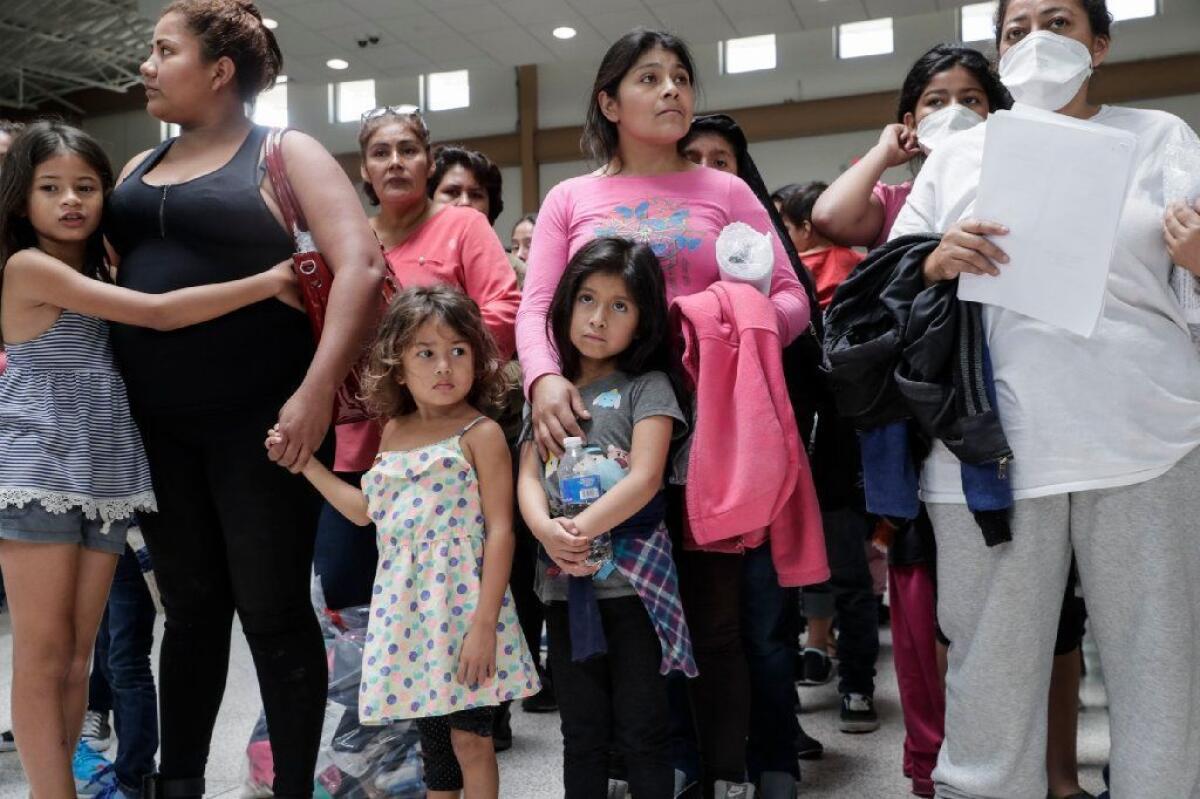Federal investigators find many failures in Trump’s family separation policy

Reporting from Washington — The Trump administration botched the implementation of its “zero tolerance” border policy earlier this year and failed to adequately prepare for the consequences of separating immigrant children from their parents, according to a report released Tuesday by federal investigators.
The Department of Homeland Security’s inspector general found that separated children were routinely held for five days or more in detention centers that were not equipped for long-term stays. In one case, a child remained in such a detention center for 25 days.
Once families were detained, the report says, the administration routinely lost track of the locations of separated parents and minors. A central database the administration said it built to help reunify families was, in reality, a hastily thrown together spreadsheet that was incomplete and full of errors.
Homeland Security “struggled to identify, track, and reunify families separated under zero tolerance due to limitations with its information technology systems … raising questions about the government’s ability to accurately report on separations and subsequent reunifications,” the report found.
It marked the federal government’s first independent assessment of the ill-fated zero tolerance policy and resulting fallout, which sparked widespread protest earlier this year when more than 2,600 immigrant children were separated from their parents and placed into government custody. The outcry was so loud that President Trump issued an executive order halting the practice on June 20.
Soon after, a federal court ruled the separations were illegal and ordered families reunified within 30 days. But even then, the administration struggled to comply. By late last month, hundreds of detained children were still were not back with their parents.
In a written response to the investigators, the Department of Homeland Security took issue with several of the findings. It said investigators did not take into account complicating factors that delayed the placement of children into long-term facilities, such as medical issues. And the department objected to the report’s characterization of its efforts to keep track of families and reunify them as disorganized and technologically incompetent. It argued the administration “took exhaustive efforts” to overcome its challenges and “stand up a process to safely reunify families expeditiously.”
The inspector general’s office also undermined the administration’s insistence that it did not have a policy designed to separate families, even though several administration officials acknowledged they hoped separation would deter illegal immigrants. The report noted that prior to the implementation of zero tolerance, asylum seekers were generally released pending their hearings or placed into custody with their children in family detention centers. By treating asylum seekers who do not come into the country through official ports of entry as criminals, the report said, the new policy “fundamentally changed DHS’ approach to immigration enforcement.”
“Because minor children cannot be held in criminal custody with an adult, alien adults who entered the United States illegally would have to be separated from any accompanying minor children when the adults were referred for criminal prosecution,” the report said.
At the same time, the administration had created a bottleneck at official ports of entry, where asylum seekers were directed to go, by limiting the number it would process. That drove many of them to take other routes into the country, at which point they were prosecuted and had their children taken from them.
“One woman said she had been turned away three times by an officer on the bridge [at a port of entry] before deciding to take her chances on illegal entry,” the report said.
Once detained, hundreds of children were kept in short-term holding facilities for far longer than the maximum 72 hours that federal law allows. In some cases, these facilities were designed as mere holding pens. They “are not designed to hold people for long periods of time,” according to the report.
But the Department of Health and Human Services, which was responsible for placing the children in long-term facilities, struggled to keep up with the demand the zero tolerance policy created. Federal officials proved to be ill-equipped to process all the necessary paperwork and coordinate transportation for all the children needing placement.
The computer systems they were using were so inadequate that investigators continue to have doubts about the data the federal government is reporting about the detentions and its reunification efforts. One agency would enter data about a family into its system, but then another agency involved wouldn’t be able to access it. At the Port Isabel Detention Center in Texas, the administration lost track of which adults in custody had been separated from children and initially made no reunification efforts when the adults were released.
After Homeland Security announced in June that it had built a central database that agencies could use to keep track of where members of separated families were being detained, the federal investigators “found no evidence that such a database exists.” Instead, they found a makeshift spreadsheet. When investigators asked for a list of every child separated from their parents as a result of zero tolerance, the administration balked for weeks and then provided data that was “incomplete and inconsistent.”
After Homeland Security announced in July that it had reunited all of the adults in the custody of U.S. Immigration and Customs Enforcement with their children, the investigators found a child who had not, in fact, been returned to their parent. That reunion did not happen until September.
As children were pulled away from their parents, according to the investigators, officers often failed to fully explain to parents what was happening and how the adults could get in touch with their kids. Some were given the toll-free number to call to get information, but not the unique code they needed to get through on it. The investigators interviewed a dozen parents who were separated from their children and found that half of them were unable to contact their kids.
The latest look at the Trump administration and the rest of Washington »
More stories from Evan Halper »
evan.halper@latimes.com | Twitter: @evanhalper
More to Read
Get the L.A. Times Politics newsletter
Deeply reported insights into legislation, politics and policy from Sacramento, Washington and beyond. In your inbox three times per week.
You may occasionally receive promotional content from the Los Angeles Times.











